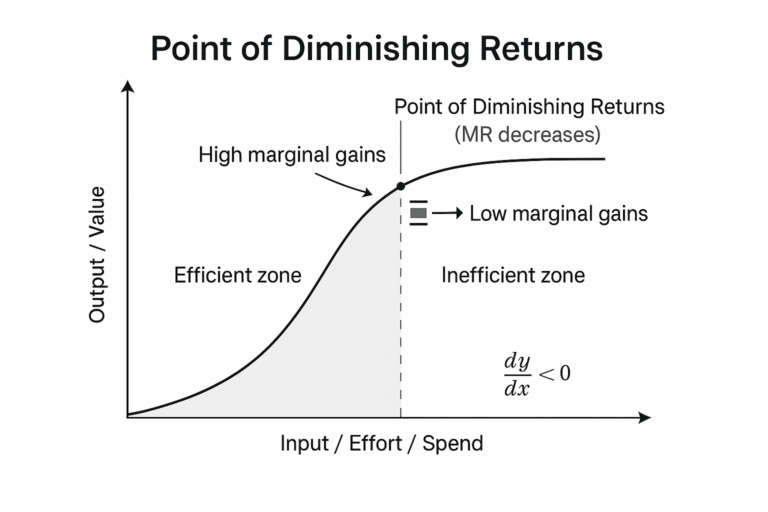CLG Metrics: Red Flags and Questions to Ask

Summary
Marketing needs to be cognizant of the impact it can have on customer relationships. In particular, while we are focused on driving expansion, we should also be careful of not overwhelming or otherwise damaging these relationships. Here are some flags to look out for and questions to ask.
By Tom Swanson: Senior Engagement Manager, Heinz Marketing
Sometimes it is more important to track what doesn’t work than what does. Customer marketing is one of these areas, at least in my opinion. The reason is simple: the relationship is yours to lose. Every relationship needs boundaries, and customer marketing walks a fine line between offering value and being annoying. This is especially true when you want them to spend more money.
Don’t get me wrong, it is very important to know what works. However, if you don’t know where the boundaries are with the various segments of your customers, then you run the risk of overstepping. Excitement about what works can quickly translate to anguish, and relationships are hard to rebuild.
I like the term “boundary metrics” for the type of thing that shows you were the line is. So here are some common flags we have encountered and suggestions on what to do about it.
Just getting started? Here is is a guide on what CLG is, an FAQ on CLG Metrics, and essential tools you need for CLG efforts.
Email Metrics
Email is very trackable and benchmarks are easy to gather. When you start to see sudden degradation of your performance against those benchmarks, there are a few things you will want to ask your team about. First off, here are some flags to look for in your email reporting:
- Deliverability below 95%
- Unsubscribe rates at greater than 0.1%
- Open rates at less than 15% (particularly for welcome/education emails)
- Click-to-open ratios of less than 8% (this can really vary by email topic)
These benchmarks I listed are general and for reference only, it is better to compare against your own historical performance.
In these cases, there are a few culprits that would indicate you are bumping up against boundaries in your customer relationships. Here are some questions to ask:
- What is the frequency of emails going out to customers?
- Do unsubscribe rate increases correlate to frequency of emails in a given period?
- What new accounts were added in the period where your metrics declined?
- Is the open-rate decline over time or does it better connect to topics?
- Has anything else changed in your email program?

As with everything, you need to figure out where the point of diminishing returns is and avoid going too far past it. This is more than economics, relationships can be damaged and take time to repair.
In-App
This is commonly less visible to marketing. But hey, it is a good reason to get chummier with your product team. There isn’t a right-size for this one, but there are some commonalities and themes. As a rule of thumb these are generally also churn-risk indicators.
- Drops in in-app communication engagement
- Things like notification muting or unopened messages
- Announcement dwells <1s
- Declining engagement with announcements
Marketing in-app can be a tricky thing. Users are there to get the value they paid for, and while we want to add value (through selling more services), they might not be open to it. Cross this boundary and you will associate negative affect with the product. Yikes.
Ask about:
- What campaigns have happened in-app?
- How frequently are we running in-app campaigns?
- Has that increased lately?
- What % of announcements have been marketing vs. other?
- Has the messaging in-product changed recently?
As with email, this boils down to relevance and frequency. Too much frequency or too little relevance will hurt the relationship. Both at the same time is a big turn-off for users.
Community

Not every tool has, or needs, a user community. If you don’t, there is still somewhere that professionals using your tool go to complain/rant with others (specific to you or not). Some examples would be subreddits, professional forums, and private Slack or LinkedIn groups. These are common.
Flags to look out for:
- Increasing negative posting about you.
- Complaints about marketing.
That’s it, pretty simple to envision, but harder to gather. Harder still to analyze, but here are some questions to ask (pro tip – use ChatGPT to do this sort of qual analysis at scale):
- What does the ChatGPT wordcloud of these comments look like?
- Copy the text of the comments, put it into a doc or directly into ChatGPT and ask it for this.
- What is the overall sentiment of these comments?
- The official term is “sentiment analysis”
- Does the frequency of these posts correlate to any particular campaigns or trends in customer marketing?
- Are any of the people posting known to us?
- What is specifically mentioned in the posts, and what trends are there among them?
There is a lot to mine in this sort of customer ranting. Highly recommended work, here.
Sales/CS data
Whoever is responsible for your expansion/renewals is the group to talk to. There are some quantitative metrics that you can track here, but a lot of it is qualitative and relational.
- Dips in expansion deal win-rates
- Dips in expansion deal qualification rates
- Dips in NPS
- Increasingly negative sentiment in expansion deal notes
- Jumps in cycle time for expansion deals
Not all of these will be directly related to marketing, but there may be correlations there that you wouldn’t know about if you didn’t ask your team.
- Are customers mentioning anything about our marketing?
- Are customers complaining at all about notifications in the system?
- Are leads from our campaigns disqualifying at a higher rate than normal?
- Are deals from our campaigns taking longer to close?
- Is there any timing correlation between NPS dips and customer marketing campaigns?
Get this information early and often, and then plan with your CS/Sales folks to react.
Conclusion
Boundaries matter. Just like in the buying process, customers are defining more about how the relationship goes than ever before. AI is only accelerating this as there is increasing parity between product offerings. Tech is commoditizing, and what will matter more is the relationships you have with your customers. These take time to build and based on trust.
In customer marketing, it is easy to get focused on the things that drive leads. To tie it all the way back to the beginning, if you aren’t careful the desire to bring value to your customers can quickly sour them on you.
Remember, what buyers want the most is confidence in the decision they made to go/stick with you. Don’t endanger it by pushing too hard, too fast.
As always, if you want to chat with me about how you can build these warning systems and the plays to deal with issues, email acceleration@heinzmarketing.com.







